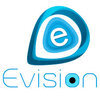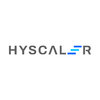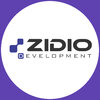Filter interviews by
Sri Chakra Scienticfic Sercices Calibration Engineer Interview Questions and Answers
7 Interview questions
Calibration is the process of adjusting and verifying the accuracy of a measuring instrument or tool.
Calibration ensures that a measuring instrument or tool provides accurate and reliable results.
It involves comparing the readings of the instrument to a known standard or reference.
Adjustments are made to the instrument until it provides accurate readings.
Calibration is important in industries such as manufacturing...
Calibration procedure for pressure gauge involves comparing the gauge readings with a reference standard.
Start by selecting a suitable reference standard with a known accuracy.
Ensure the pressure gauge is clean and in good condition before calibration.
Connect the pressure gauge to the reference standard using appropriate fittings and tubing.
Apply a series of known pressures to the reference standard and record the...
Pressure gauge measures pressure of gases or liquids, vacuum gauge measures pressure below atmospheric pressure, compound gauge measures both.
Pressure gauge measures pressure of gases or liquids
Vacuum gauge measures pressure below atmospheric pressure
Compound gauge measures both
Pressure gauge is used in applications such as hydraulic systems, air compressors, and refrigeration systems
Vacuum gauge is used in applic...
Calibration ensures accuracy and reliability of instruments and equipment.
Calibration helps to maintain the quality of products and services.
It ensures that measurements are consistent and reliable.
Calibration helps to identify and correct errors in instruments and equipment.
It is necessary for compliance with industry standards and regulations.
Examples of instruments that require calibration include thermometers,...
RTD measures resistance changes with temperature while thermocouple measures voltage changes with temperature.
RTD has a linear relationship between resistance and temperature while thermocouple has a non-linear relationship between voltage and temperature.
RTD is more accurate and stable than thermocouple.
RTD is suitable for precise temperature measurements while thermocouple is suitable for high-temperature measur...
Least count is the smallest measurement that can be taken, while resolution is the smallest change that can be detected.
Least count is determined by the instrument's precision and accuracy
Resolution is determined by the number of digits displayed on the instrument
For example, a ruler with a least count of 1 mm can measure up to 1 mm accuracy, while a digital caliper with a resolution of 0.01 mm can detect changes ...
Accuracy refers to how close a measured value is to the true value or the target value.
Accuracy is crucial in calibration to ensure instruments provide reliable measurements.
For example, if a thermometer reads 100°C when the actual temperature is 100°C, it is accurate.
Accuracy can be affected by systematic errors, which can be minimized through proper calibration.
In contrast, precision refers to the consistency of...
Sri Chakra Scienticfic Sercices Calibration Engineer Interview Experiences
1 interview found
Interview Questionnaire
9 Questions
- Q1. What is the calibration
- Ans.
Calibration is the process of adjusting and verifying the accuracy of a measuring instrument or tool.
Calibration ensures that a measuring instrument or tool provides accurate and reliable results.
It involves comparing the readings of the instrument to a known standard or reference.
Adjustments are made to the instrument until it provides accurate readings.
Calibration is important in industries such as manufacturing, aer...
- Q2. Why calibration should done
- Ans.
Calibration ensures accuracy and reliability of instruments and equipment.
Calibration helps to maintain the quality of products and services.
It ensures that measurements are consistent and reliable.
Calibration helps to identify and correct errors in instruments and equipment.
It is necessary for compliance with industry standards and regulations.
Examples of instruments that require calibration include thermometers, pres...
- Q3. What is the difference between accuracy and acceptance criteria
- Q4. What is the difference between least count and resolution
- Ans.
Least count is the smallest measurement that can be taken, while resolution is the smallest change that can be detected.
Least count is determined by the instrument's precision and accuracy
Resolution is determined by the number of digits displayed on the instrument
For example, a ruler with a least count of 1 mm can measure up to 1 mm accuracy, while a digital caliper with a resolution of 0.01 mm can detect changes as sm...
- Q5. Can explain the Accuracy
- Ans.
Accuracy refers to how close a measured value is to the true value or the target value.
Accuracy is crucial in calibration to ensure instruments provide reliable measurements.
For example, if a thermometer reads 100°C when the actual temperature is 100°C, it is accurate.
Accuracy can be affected by systematic errors, which can be minimized through proper calibration.
In contrast, precision refers to the consistency of repe...
- Q6. What is difference between RTD and thermo couple
- Ans.
RTD measures resistance changes with temperature while thermocouple measures voltage changes with temperature.
RTD has a linear relationship between resistance and temperature while thermocouple has a non-linear relationship between voltage and temperature.
RTD is more accurate and stable than thermocouple.
RTD is suitable for precise temperature measurements while thermocouple is suitable for high-temperature measurement...
- Q7. What is difference between pressure gauge ,vacuum gauge , compound gauge
- Ans.
Pressure gauge measures pressure of gases or liquids, vacuum gauge measures pressure below atmospheric pressure, compound gauge measures both.
Pressure gauge measures pressure of gases or liquids
Vacuum gauge measures pressure below atmospheric pressure
Compound gauge measures both
Pressure gauge is used in applications such as hydraulic systems, air compressors, and refrigeration systems
Vacuum gauge is used in application...
- Q8. Tell the explain calibration procedure for pressure gauge
- Ans.
Calibration procedure for pressure gauge involves comparing the gauge readings with a reference standard.
Start by selecting a suitable reference standard with a known accuracy.
Ensure the pressure gauge is clean and in good condition before calibration.
Connect the pressure gauge to the reference standard using appropriate fittings and tubing.
Apply a series of known pressures to the reference standard and record the corr...
- Q9. Why do you think the job should be Change
- Ans.
I bring a unique blend of technical expertise, problem-solving skills, and a commitment to quality that aligns perfectly with this role.
Extensive experience in calibration processes, ensuring precision and accuracy in measurements.
Proven track record of improving calibration procedures, resulting in a 20% reduction in downtime.
Strong analytical skills, demonstrated by successfully troubleshooting complex calibration is...
Top trending discussions






Interview questions from similar companies

I appeared for an interview before Jun 2016.
Interview Questionnaire
1 Question
- Q1. Java related questions on Oops concept and Multithreading
Interview Preparation Tips
Experience: Simple aptitude and reasoning questions little java based programming
Tips: Basic programming knowledge and good aptitude
Duration: 1 hour
Total Questions: 60
Round: Technical Interview
Experience: Normal questions on Java, basic programming questions like reverse no. , String related and logical coding
Tips: What u mentioned on your resume go through that only, they will not ask apart from your resume
Skills: How Well You Are Able To Communicate What You Wanted To Tell, Programming
College Name: SRCEM

I appeared for an interview before May 2016.
Interview Preparation Tips

I appeared for an interview in Mar 2017.
Interview Questionnaire
5 Questions
- Q1. Related to semiconductors, processors etc. were asked.
- Q2. Strength
- Q3. Weaknesses
- Q4. Hobbies
- Q5. If there are 200 fishes in an aquarium. 99% are red. How many fishes have to be removed to make the red fishes 98 % in the aquarium?
- Ans.
To make the red fishes 98%, 50 fishes have to be removed from the aquarium.
Calculate 1% of 200 fishes to find the number of red fishes.
Subtract the number of red fishes from 200 to find the number of non-red fishes.
Calculate 2% of the total number of fishes to find the desired number of red fishes.
Subtract the desired number of red fishes from the current number of red fishes to find the number of fishes to be removed.
Interview Preparation Tips
Experience: There were 40 aptitude questions of variable difficulty. More questions revolved around topics like time and work, distance, speed, time, profit loss, age etc.
Tips: A regular and prior preparation will go a long way in determining a good test score.
Use tricks to solve the questions and calculations should be fast.
Duration: 30 minutes
Total Questions: 40
Round: Test
Experience: The questions weren't that tough when it came to programming. An example would be conversion of temperature from Celsius to Fahrenheit and vice versa. This was a question in my paper. So I'm hoping the difficulty would be more or less the same.
Tips: Do certified programming courses. They help you a lot in cracking good jobs.
Duration: 45 minutes
Total Questions: 3
Round: Puzzle Interview
Tips: This can be tough if you can't imagine scenarios and situations. So make sure you inculcate critical problem solving thinking in your everyday life. I feel that's the best way to do things in this round.
Round: Technical Interview
Experience: This was a short interview so not much happened.
Tips: Whatever you do just know your stuff properly.
Round: HR Interview
Experience: It was a simple interview. Basic questions and their basic answers helped me get through it.
Tips: The tip would be to stay positive in your approach while answering the questions
Skills: Technical Skill, Interpersonal Communication, Aptitude
College Name: VIT Vellore

Software Engineer Interview Questions & Answers
Huawei Technologiesposted on 28 Jun 2017
I appeared for an interview in Mar 2017.
Interview Questionnaire
5 Questions
- Q1. Related to semiconductors, processors etc. were asked.
- Q2. Weaknesses
- Q3. Strength
- Q4. Hobby
- Q5. If there are 200 fishes in an aquarium. 99% are red. How many fishes have to be removed to make the red fishes 98 % in the aquarium?
- Ans.
To make the red fishes 98%, 50 fishes have to be removed from the aquarium.
Calculate 1% of 200 fishes to find out how many fishes represent 1%.
Multiply the result by 2 to find out how many fishes represent 2%.
Subtract the result from 200 to find out how many fishes represent 98%.
Interview Preparation Tips
Experience: There were 40 aptitude questions of variable difficulty. More questions revolved around topics like time and work, distance, speed, time, profit loss, age etc.
Tips: A regular and prior preparation will go a long way in determining a good test score.
Use tricks to solve the questions and calculations should be fast.
Duration: 30 minutes
Total Questions: 40
Round: Test
Experience: The questions weren't that tough when it came to programming. An example would be conversion of temperature from Celsius to Fahrenheit and vice versa. This was a question in my paper. So I'm hoping the difficulty would be more or less the same.
Tips: Do certified programming courses. They help you a lot in cracking good jobs.
Duration: 45 minutes
Total Questions: 3
Round: Puzzle Interview
Tips: This can be tough if you can't imagine scenarios and situations. So make sure you inculcate critical problem solving thinking in your everyday life. I feel that's the best way to do things in this round.
Round: Technical Interview
Experience: This was a short interview so not much happened.
Tips: Whatever you do just know your stuff properly.
Round: HR Interview
Experience: It was a simple interview. Basic questions and their basic answers helped me get through it.
Tips: The tip would be to stay positive in your approach while answering the questions
Skills: Technical Skill, Interpersonal Communication, Aptitude
College Name: VIT Vellore

I appeared for an interview in Feb 2017.
Interview Preparation Tips
Experience: It was a simple aptitude test in which around 150 students cleared the test.
Duration: 1 hour
Total Questions: 40
Round: Test
Experience: Three programs were given and we had to write the code in either java ,c or c++ and get the required output.Around 90 students cleared this round.
Duration: 1 hour 30 minutes
Total Questions: 3
College Name: VIT Vellore

Software Engineer Interview Questions & Answers
Huawei Technologiesposted on 3 May 2017
I appeared for an interview before May 2016.
Interview Preparation Tips
Experience: The test was conducted through Cocubes. It was moderately difficult. Some of the questions are time taking. We need to be decisive in attempting such questions.
Tips: Need to manage time properly. Should assess and choose which questions to attempt and which ones to leave.
Duration: 1 hour
Total Questions: 30
Round: Test
Experience: The three questions are of three different levels.
1. You will be given two numbers. The first one is the starting point and the second one is the ending point of a range of integers. You have to count the number of integers in that range which are divisible by the first number.
Ex : INPUT : 3 18
OUTPUT : 6
2. You will be given a number. You have to find the sum of the digits. If the sum exceeds 9, you have to add the digits of the sum recursively until you a get a single digit sum.
EX : INPUT : 9999
OUTPUT : 9
Explanation: 9999 => 9 +9+9+9=36 => 3+6 =9
3. You will be given an array of characters which include ( L, R , or a number in the range '0' to '9'). A ball is kept on a line of integers initially kept at zero. The ball has to execute the instructions sequentially as follows:
(i) If an 'L' character is encountered, the ;position of the ball has to be decremented.
(ii) If an 'R' character is encountered, the position of the ball has to be incremented.
(iii) If an integer (in the range '0' to '9) is encountered , we have to go to that index in the array and execute the instruction present in that index.
Finally, after all the instructions are executed, you have to print the final position of the ball.
EX : INPUT :
Number of instruction : 5
Instructions: LR1R2
OUTPUT : 3
Explanation :
(i) Initially, the ball is at 0. Since the 0th index in the array is 'L' , the ball moves to 0-1= -1 position.
(ii) The 1st index is 'R' hence, the position of the ball is -1 +1 = 0 position.
(iii) The 2nd index is '1', hence we have to go to index 1 in the array which is 'R', hence the new position is 0+1 =1.
(iv) The 3rd index is 'R', hence the new position is 1 +1 =2.
(v) The 4th index is '2' , hence we have to go to 2nd index is '1' , hence we have to go again to 1st index , which is 'R' hence the final position is 2+1 =3.
Tips: We need to solve all the three the problems to have better chances of clearing this round.
Duration: 1 hour
Total Questions: 3
Round: Technical Interview
Experience: The interview was focussed majorly on coding. It went for about 45min with around 10 coding problems given to solve. Some basics of Computer networking are also tested in this round.
Tips: Be prepared with some basics of networking. As the company's main focus is on Telecom, good knowledge in telecom and networking would be a big advantage.
Round: Technical Interview
Experience: This round was focused on the aptitude and reasoning skills. Some puzzles were given in this round. These puzzles are of moderately complex and are more common ones in interviews. Like the (find the heavier ball among three balls using a balance in min no. of attempts).
Tips: Sometimes the interviewer tries to confuse. You need to be confident with your answers and explaination.
Round: HR Interview
Experience: The interview was more of a traditional HR round. Majorly concentrated on the final year project, personal strengths and weaknesses.
Skills: Coding Skills, Computer Networking, C Language Basics
College Name: G Pulla Reddy College of Engineering & Technology

I appeared for an interview in Mar 2017.
Interview Questionnaire
5 Questions
- Q1. Related to semiconductors, processors etc. were asked.
- Q2. Strength
- Q3. Weaknesses
- Q4. Hobby
- Q5. If there are 200 fishes in an aquarium. 99% are red. How many fishes have to be removed to make the red fishes 98 % in the aquarium?
- Ans.
To make the red fishes 98%, 50 fishes have to be removed from the aquarium.
Calculate 1% of 200 fishes, which is 2 fishes.
To make the red fishes 98%, subtract 1% (2 fishes) from 99% (198 fishes).
To find the number of fishes to be removed, divide the difference by 1% (2 fishes).
Therefore, 50 fishes have to be removed to make the red fishes 98%.
Interview Preparation Tips
Experience: There were 40 aptitude questions of variable difficulty. More questions revolved around topics like time and work, distance, speed, time, profit loss, age etc.
Tips: A regular and prior preparation will go a long way in determining a good test score.
Use tricks to solve the questions and calculations should be fast.
Duration: 30 minutes
Total Questions: 40
Round: Test
Experience: The questions weren't that tough when it came to programming. An example would be conversion of temperature from Celsius to Fahrenheit and vice versa. This was a question in my paper. So I'm hoping the difficulty would be more or less the same.
Tips: Do certified programming courses. They help you a lot in cracking good jobs.
Duration: 45 minutes
Total Questions: 3
Round: Puzzle Interview
Tips: This can be tough if you can't imagine scenarios and situations. So make sure you inculcate critical problem solving thinking in your everyday life. I feel that's the best way to do things in this round.
Round: Technical Interview
Experience: This was a short interview so not much happened.
Tips: Whatever you do just know your stuff properly.
Round: HR Interview
Experience: It was a simple interview. Basic questions and their basic answers helped me get through it.
Tips: The tip would be to stay positive in your approach while answering the questions
Skills: Technical Skills, Interpersonal Communication, Aptitude
College Name: VIT Vellore

I applied via Company Website and was interviewed before Dec 2019. There were 3 interview rounds.
Interview Questionnaire
1 Question
- Q1. Regarding OOPS, wordpress and laravel.
Interview Preparation Tips

I applied via Recruitment Consultant and was interviewed before Apr 2020. There were 4 interview rounds.
Interview Questionnaire
1 Question
- Q1. On Java
Interview Preparation Tips
Sri Chakra Scienticfic Sercices Interview FAQs
Some of the top questions asked at the Sri Chakra Scienticfic Sercices Calibration Engineer interview -
Tell us how to improve this page.
Interview Questions for Popular Designations
- Software Engineer Interview Questions
- Senior Engineer Interview Questions
- Quality Engineer Interview Questions
- QA Engineer Interview Questions
- Junior Engineer Interview Questions
- Test Engineer Interview Questions
- Automation Test Engineer Interview Questions
- Assistant Engineer Interview Questions
- Show more
Interview Questions from Similar Companies

Sri Chakra Scienticfic Sercices Calibration Engineer Reviews and Ratings
based on 10 reviews
Rating in categories
|
Calibration Engineer
22
salaries
| ₹1.6 L/yr - ₹3.8 L/yr |
|
Senior Calibration Engineer
7
salaries
| ₹1.8 L/yr - ₹4.5 L/yr |
|
Deputy Manager
3
salaries
| ₹6 L/yr - ₹9.3 L/yr |
|
Senior Executive
3
salaries
| ₹2.3 L/yr - ₹3 L/yr |
|
Executive
3
salaries
| ₹2.2 L/yr - ₹3.5 L/yr |

Marpu Foundation

Huawei Technologies

HCL Infosystems

Z X Learning
- Home >
- Interviews >
- Sri Chakra Scienticfic Sercices Interview Questions











